In today’s fast-paced Phygital (Physical + Digital) world, the lines between online and offline experiences are blurring. Demand for instant delivery is at its peak. Consumers expect nothing short of seamless, efficient, and rapid delivery of goods and services. This expectation has given rise to the on-demand delivery market, which has become a cornerstone of modern commerce. At the heart of this market lies last mile delivery software. A powerful tool that ensures the successful completion of the final leg of the delivery journey.
Why has it become essential for businesses to embrace last mile delivery software for on-demand delivery?
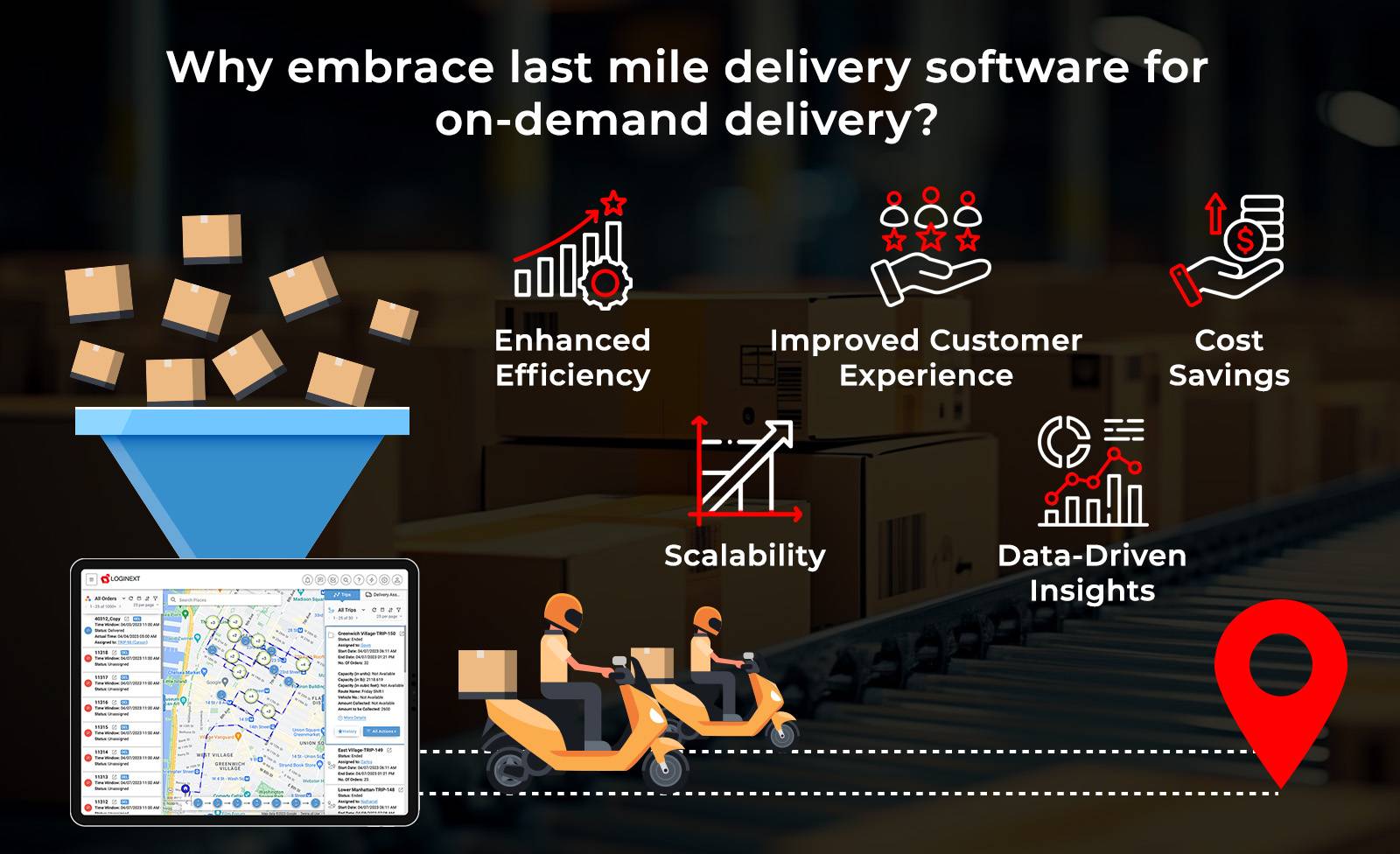
Here are a few reasons why businesses should consider last mile delivery software for instant delivery.
Enhanced Efficiency: Last mile delivery system streamlines the entire delivery process. From order placement to final delivery, significantly reducing the time and resources required to fulfill customer orders.
Improved Customer Experience: In the age of instant delivery, providing exceptional customer experience is paramount for businesses to thrive. Last mile delivery software plays a crucial role by offering customers transparency and control over their delivery experience.
Cost Savings: Traditional delivery methods often incur high costs due to inefficient route planning, fuel expenses, and manpower utilization. However, last mile delivery system optimizes these processes, leading to significant cost savings for businesses.
Scalability: As businesses grow and expand their operations, scalability becomes a critical factor in sustaining success. Last mile delivery software offers scalability by adapting to the evolving needs and demands of businesses.
Data-Driven Insights: Insights derived from on-demand delivery data can provide valuable information for optimizing operations and enhancing decision-making. Last mile delivery system collects data throughout the delivery process, including delivery times, route efficiency, and customer preferences.
Must Read: Importance Of Last Mile Delivery Software In The Logistics Industry
How are the challenges in on-demand delivery addressed?
As customer patience reduces and seamless digital experiences rise, on-demand delivery has become the norm rather than an exception. However, with the convenience of ordering goods with a tap of a finger comes multiple challenges, particularly with delivery. From fluctuating consumer demands to traffic congestion and last-minute order modifications, businesses face numerous hurdles in ensuring timely and efficient delivery. Let’s explore how last mile delivery software offers innovative solutions to overcome them.
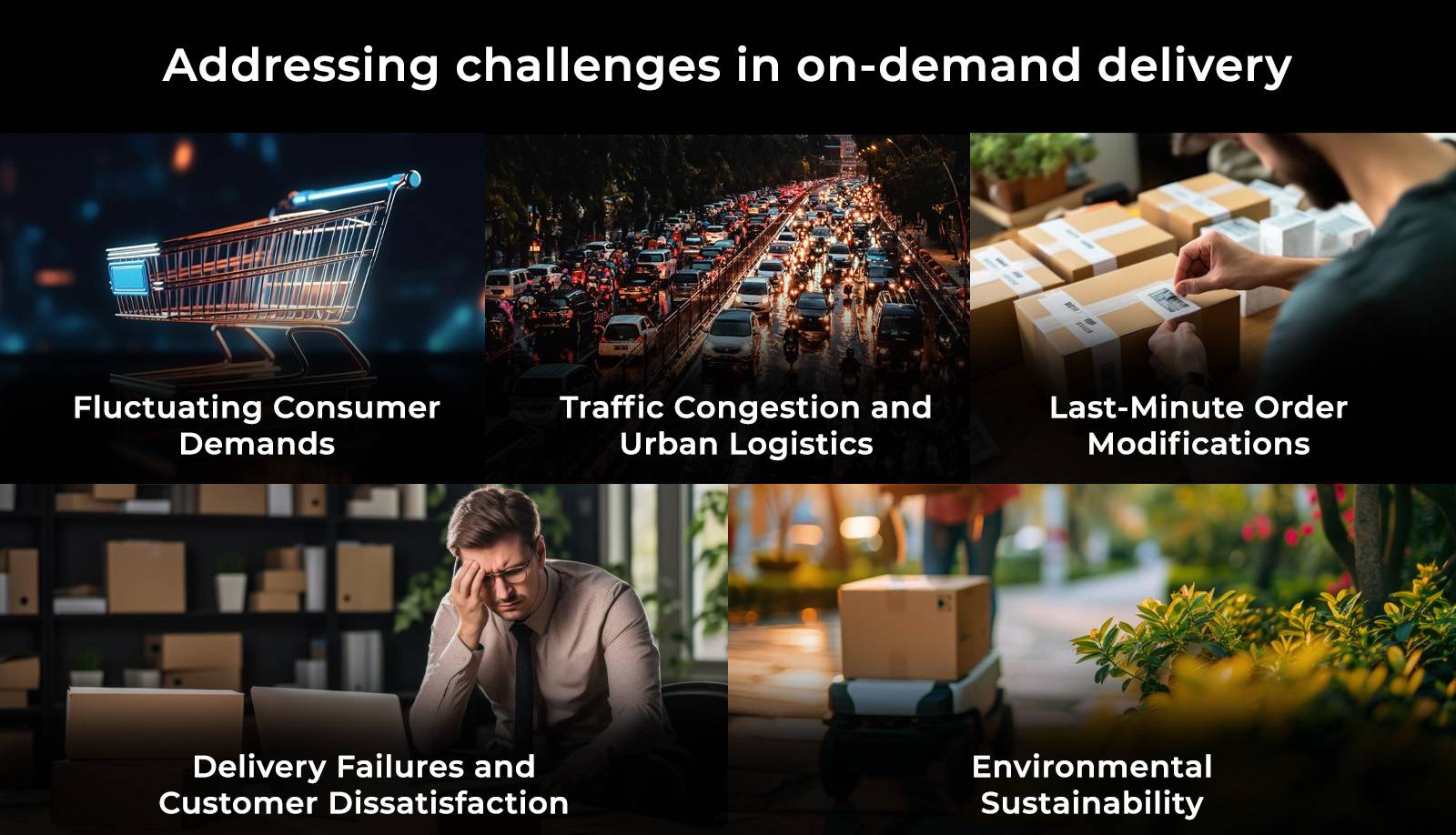
Fluctuating Consumer Demands:
One of the biggest challenges in on-demand delivery is the unpredictable nature of consumer demands. From seasonal spikes in orders to sudden surges during promotional events, businesses must be prepared to scale their delivery operations dynamically to meet fluctuating demand levels.
Traffic Congestion and Urban Logistics:
Navigating through congested city streets poses a significant challenge for delivery drivers, leading to delays, inefficiencies, and increased fuel consumption. Urban logistics present a complex puzzle, requiring sophisticated solutions to optimize routes, minimize travel time, and mitigate the impact of traffic congestion on delivery schedules.
Last-Minute Order Modifications:
In the fast-paced world of on-demand delivery, last-minute order modifications are par for the course. Whether it’s a change in delivery address, special instructions, or delivery time preferences, businesses must adapt quickly to accommodate customer requests while maintaining operational efficiency.
Delivery Failures and Customer Dissatisfaction:
Failed deliveries not only incur additional costs for businesses but also result in dissatisfied customers and tarnished reputations. From missed delivery windows to lost or damaged packages, delivery failures can have far-reaching consequences, affecting customer loyalty and brand perception.
Environmental Sustainability:
With growing concerns about environmental sustainability, businesses are under increasing pressure to minimize their carbon footprint and adopt eco-friendly practices in their delivery operations. This includes optimizing delivery routes to reduce fuel consumption, implementing green packaging solutions, and exploring alternative modes of transportation such as electric vehicles and bike couriers.
How to enhance customer experience for last mile delivery?
In the hypercompetitive landscape of on-demand delivery, providing exceptional customer experiences has become a necessity. We’ll explore how last mile delivery software plays a pivotal role in enhancing the customer experience. Right from the moment an order is placed to the final delivery at your doorstep.
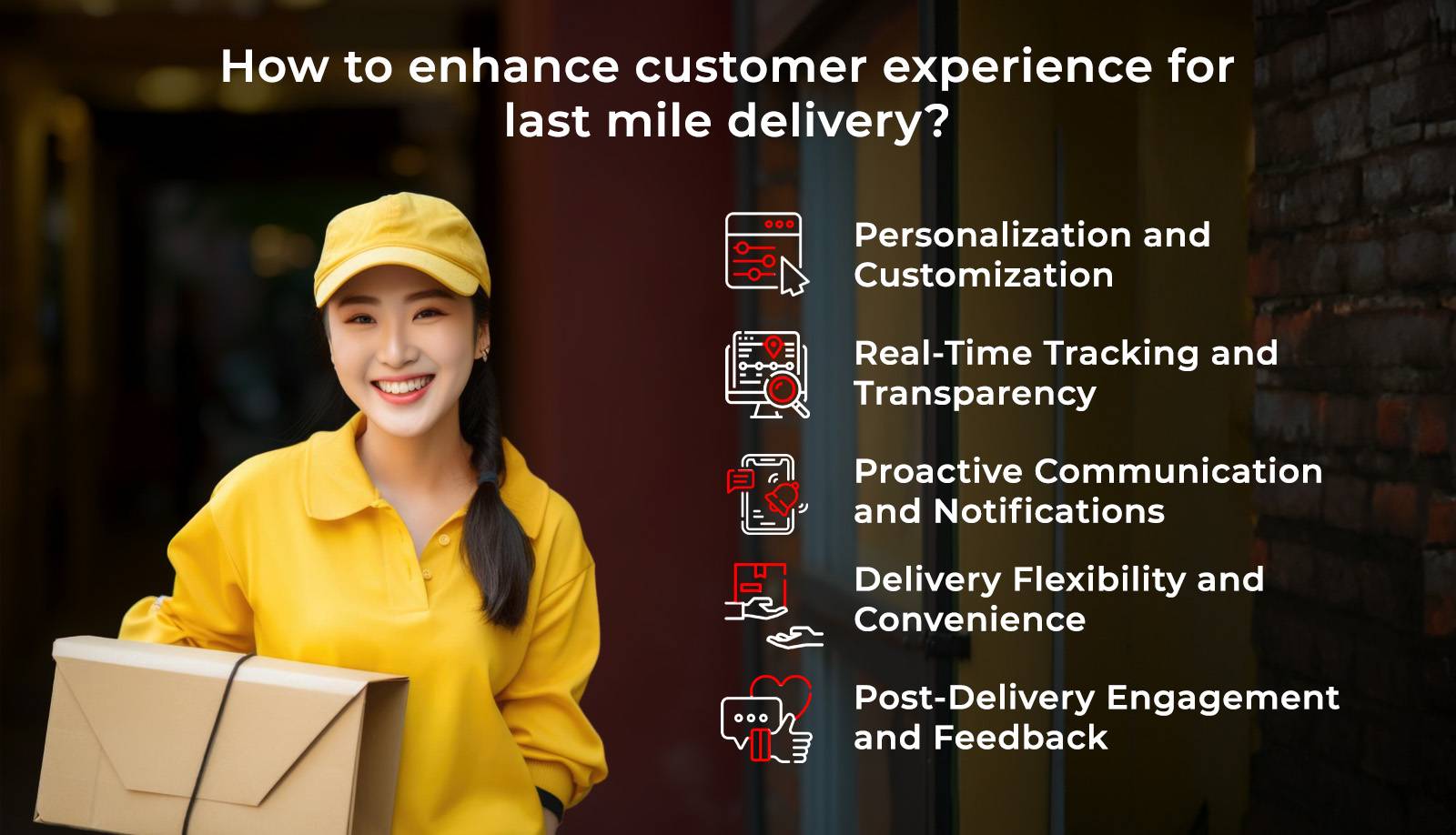
Personalization and Customization:
One of the key ways last mile delivery software enhances the customer experience is by offering personalized and customizable delivery options. From choosing delivery time slots that align with their schedule to specifying delivery instructions or preferences, customers appreciate the flexibility and control afforded by these features, resulting in higher satisfaction levels and repeat business.
Real-Time Tracking and Transparency:
Nothing instills confidence in customers quite like real-time tracking and transparency throughout the delivery process. Last mile delivery system provides customers with the ability to track their packages every step of the way, from the moment they leave the warehouse to their arrival at their doorstep. This transparency not only reduces anxiety and uncertainty but also fosters trust and loyalty by keeping customers informed and engaged.
Proactive Communication and Notifications:
Effective communication is key to delivering exceptional customer experiences. Last mile delivery software enables businesses to communicate proactively with customers, providing timely updates, notifications, and alerts at various stages of the delivery journey. Whether it’s confirming the order, notifying of delays or changes in delivery status, or seeking feedback post-delivery, these communication channels empower businesses to stay connected with their customers and address any concerns or issues promptly.
Delivery Flexibility and Convenience:
In today’s fast-paced world, convenience is king. Last mile delivery system offers customers greater flexibility and convenience by allowing them to choose from a range of delivery options. These include same-day delivery, express delivery, or scheduled deliveries at their preferred time and location. This level of flexibility caters to diverse customer needs and preferences, enhancing the overall delivery experience and driving customer satisfaction.
Post-Delivery Engagement and Feedback:
The customer experience doesn’t end when the package is delivered—it extends to the post-delivery phase as well. Last mile delivery software facilitates post-delivery engagement by soliciting feedback from customers, gauging their satisfaction levels, and addressing any issues or concerns they may have. This feedback loop not only helps businesses identify areas for improvement but also strengthens customer relationships and fosters loyalty in the long run.
Quick Read: How LogiNext Helped Boost Customer Experience By 90%
Top 5 brands incorporating Phygital experience solution to enhance last mile delivery
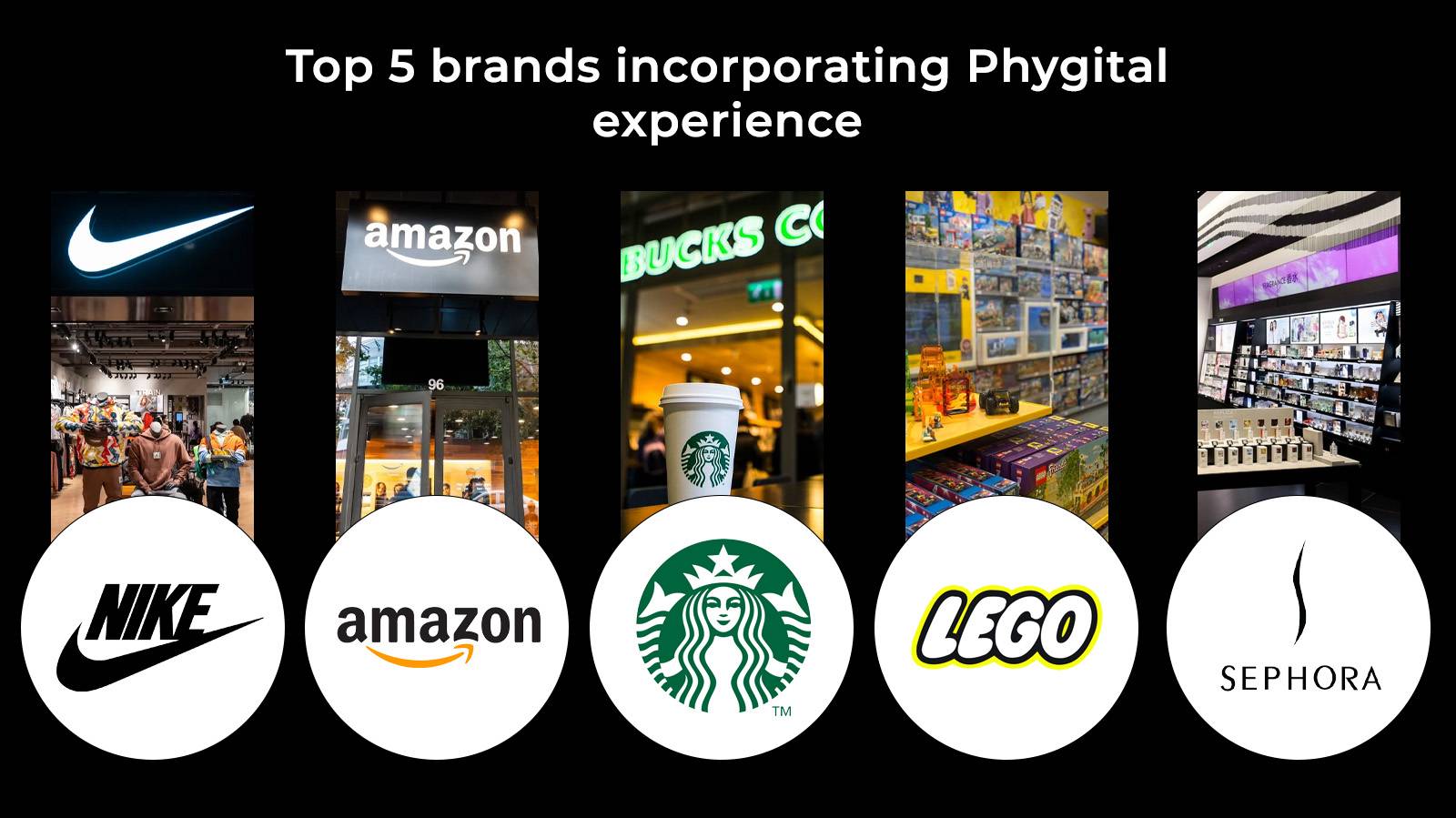
Nike: Nike has been a pioneer in integrating physical and digital experiences seamlessly. Their Nike Run Club app connects with physical activities, providing personalized coaching and tracking features for runners. Additionally, Nike’s concept stores often incorporate interactive digital displays and tools to enhance the in-store shopping experience, such as the Nike By You customization options available both online and in-store.
Amazon: While primarily an online retailer, Amazon has been expanding its presence in the physical realm with the acquisition of Whole Foods Market and the launch of Amazon Go stores. These stores offer a blend of physical shopping experiences with digital technology. Thus allowing customers to shop without checkout lines through the use of computer vision, sensors, and mobile app integration.
Starbucks: Starbucks has leveraged digital technology to enhance the in-store experience for customers. The Starbucks mobile app allows users to order and pay ahead, earn rewards, and access exclusive offers. Furthermore, Starbucks’ Reserve Roastery locations offer immersive physical experiences, with interactive tours, digital menus, and augmented reality experiences to engage customers while enjoying their coffee.
LEGO: LEGO has embraced Phygital experiences through initiatives like LEGO Life. This is a digital platform where users can share their creations, participate in challenges, and interact with the LEGO community. Additionally, LEGO’s LEGO® Hidden Side™ sets incorporate augmented reality (AR) features, allowing users to interact with physical LEGO sets through a companion app, bringing the sets to life with digital gameplay and storytelling.
Sephora: Sephora has integrated digital technology into its physical retail stores to offer personalized beauty experiences. The Sephora Virtual Artist app allows customers to virtually try on makeup products using augmented reality technology. Furthermore, Sephora’s Beauty Insider program seamlessly connects online and in-store purchases, providing customers with personalized recommendations and rewards across channels.
Don’t Miss: How To Deliver A Great Phygital Experience?
Boosting operational efficiency and cost savings for on-demand deliveries
Efficient delivery operations not only ensure timely and reliable service but also drive cost savings and profitability for businesses.
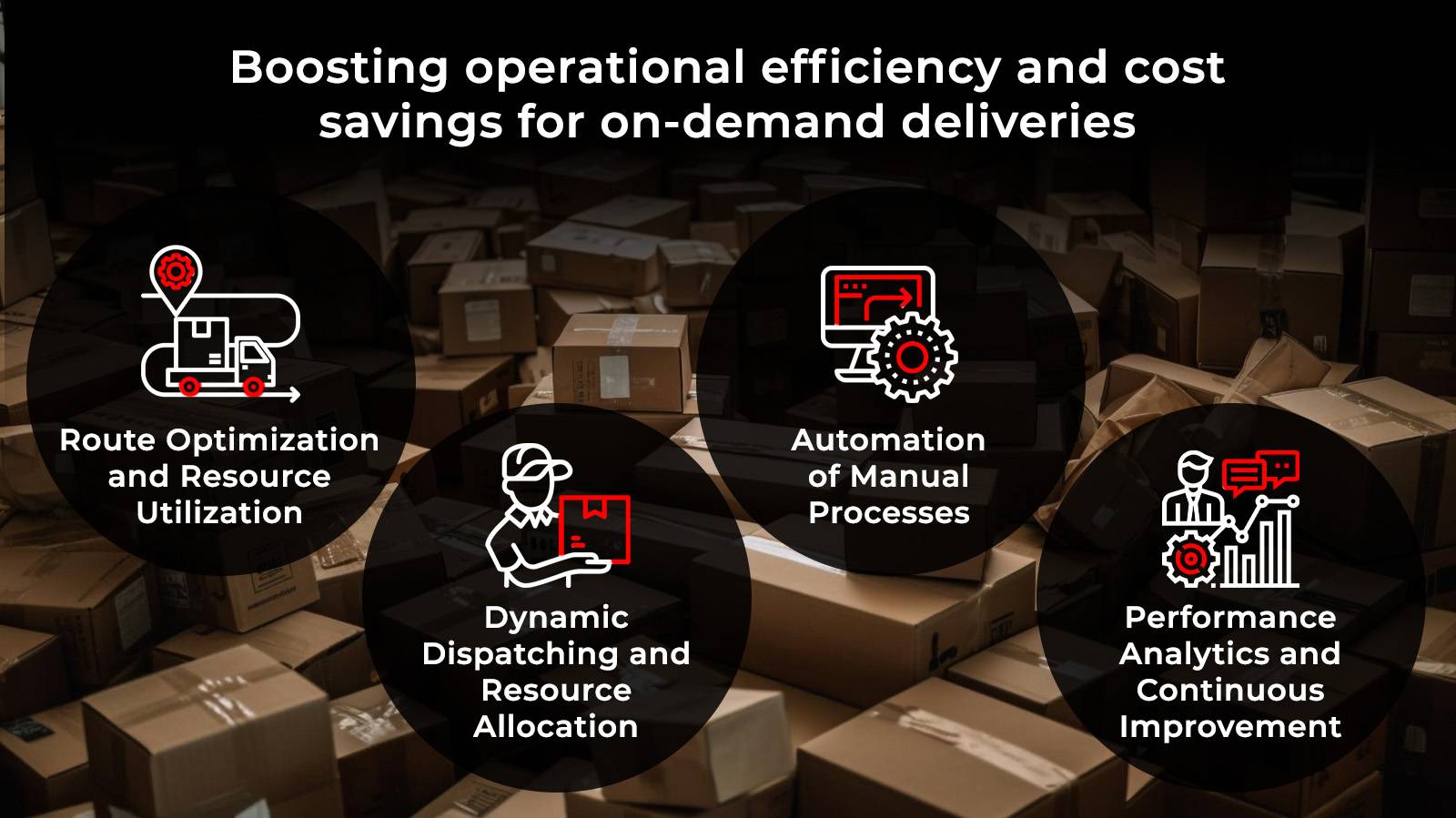
Route Optimization and Resource Utilization:
One of the primary ways last mile delivery software enhances operational efficiency is through route optimization and resource utilization. By leveraging advanced algorithms and real-time data analytics, the on-demand delivery software intelligently optimizes delivery routes. Thus ensuring that drivers take the most efficient paths to reach their destinations. This optimization minimizes fuel consumption, reduces travel time, and maximizes the number of deliveries per route, ultimately driving down operational costs and improving overall efficiency.
Dynamic Dispatching and Resource Allocation:
Last mile delivery system enables businesses to dynamically dispatch and allocate resources based on real-time demand and changing delivery priorities. By intelligently assigning deliveries to available drivers and vehicles, businesses can optimize resource utilization, minimize idle time, and respond swiftly to fluctuating order volumes or unexpected disruptions. This agility and flexibility not only streamline on-demand delivery but also enhance customer satisfaction by ensuring timely and reliable deliveries.
Automation of Manual Processes:
Manual processes are not only time-consuming but also prone to errors and inefficiencies. Last mile delivery software automates repetitive and manual tasks such as order processing, dispatching, and route planning. Thus freeing up valuable time and resources for businesses to focus on higher-value activities. This automation streamlines operations, reduces human error, and improves overall productivity, leading to significant cost savings and operational efficiencies.
Performance Analytics and Continuous Improvement:
Last mile delivery system provides businesses with actionable insights and performance analytics. It helps monitor key performance indicators (KPIs), identify areas for improvement, and drive continuous optimization. By analyzing delivery performance metrics such as on-time delivery rates, delivery cycle times, and customer satisfaction scores, businesses can pinpoint bottlenecks, optimize processes, and implement data-driven strategies to enhance operational efficiency and drive cost savings over time.
Future trends and innovations to revolutionize operations in the Phygital world for last mile delivery
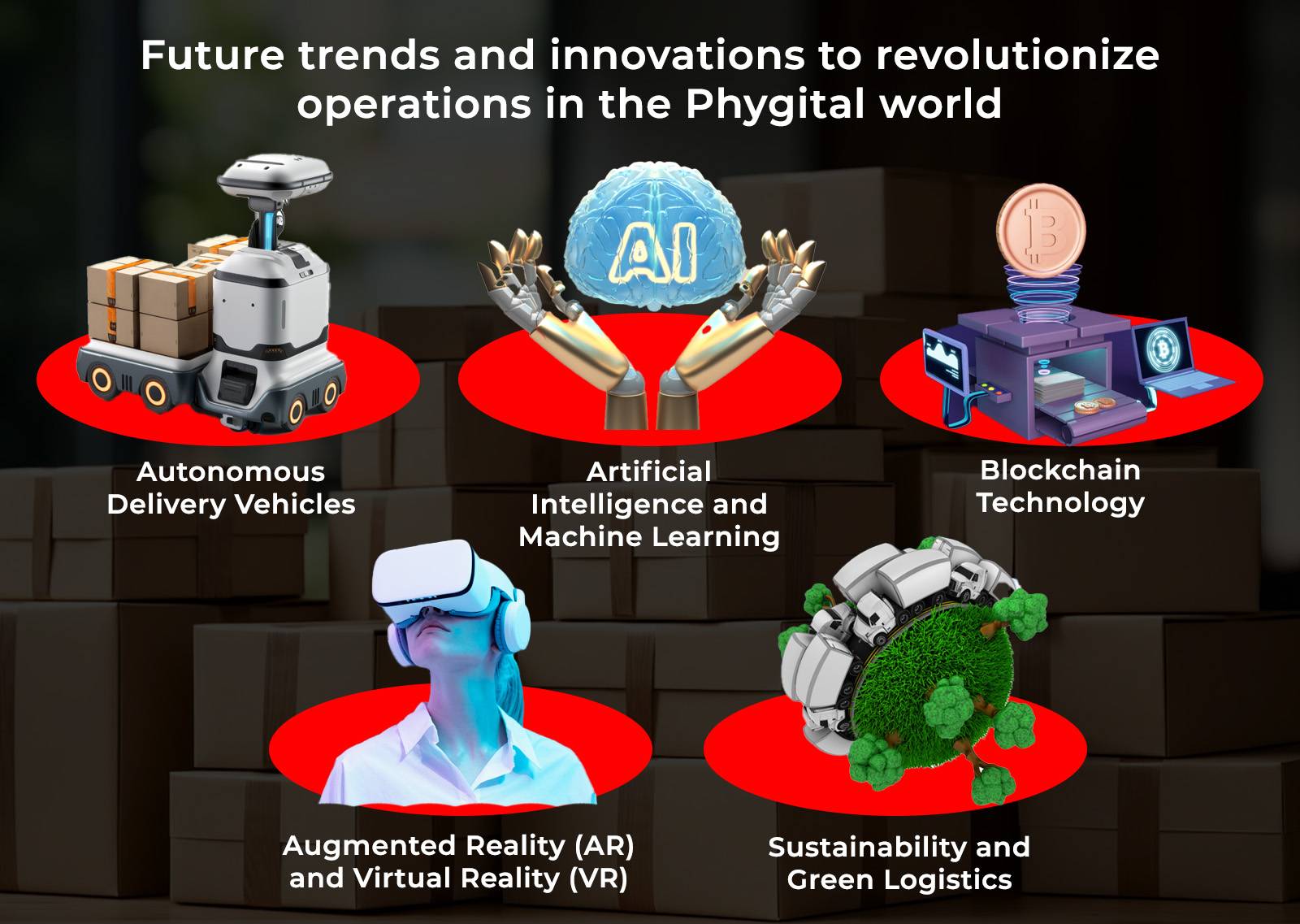
Autonomous Delivery Vehicles:
The advent of autonomous delivery vehicles, including drones and self-driving robots, holds immense promise for the future of last mile delivery. These vehicles offer unprecedented speed, efficiency, and cost-effectiveness, enabling businesses to bypass traffic congestion and deliver packages directly to customers’ doorsteps in record time.
Artificial Intelligence and Machine Learning:
Artificial intelligence (AI) and machine learning (ML) are increasingly being integrated into last mile delivery software. It helps optimize route planning, predict delivery times more accurately, and enhance decision-making processes. AI-powered algorithms analyze vast amounts of data to identify patterns, trends, and anomalies, enabling businesses to make data-driven decisions and continuously improve the efficiency of their delivery operations.
Interesting Read: 4 Ways AI Boost Last Mile Delivery Operations
Blockchain Technology:
Blockchain technology holds the promise of revolutionizing the transparency, security, and traceability of on-demand delivery operations. By leveraging blockchain-based solutions, businesses can create immutable records of every transaction and movement of goods throughout the delivery process. Thus reducing the risk of fraud, theft, and tampering. Additionally, blockchain enables greater trust and collaboration across the entire supply chain ecosystem. This paves the way for more efficient and secure deliveries in the Phygital world.
Augmented Reality (AR) and Virtual Reality (VR):
Augmented reality (AR) and virtual reality (VR) are poised to transform the customer experience in on-demand delivery. It will offer an immersive and interactive shopping experience. From virtual product demonstrations and 3D visualization of products to AR-powered navigation for delivery personnel, these technologies enhance engagement, reduce returns, and streamline the delivery process, ultimately leading to higher customer satisfaction and loyalty.
Sustainability and Green Logistics:
With growing awareness of environmental sustainability, businesses are increasingly prioritizing green logistics and eco-friendly delivery solutions. From electric vehicles and bike couriers to carbon-neutral delivery options and sustainable packaging materials, the future of last mile delivery is inherently linked to environmental sustainability and responsible business practices. By embracing sustainable initiatives, businesses can reduce their carbon footprint, mitigate climate change impacts, and appeal to environmentally conscious consumers.
Meet your last mile delivery expectations with our solution:
In the Phygital world, where the boundaries between the physical and digital realms continue to blur. The role of last mile delivery software in shaping the future of on-demand delivery cannot be overstated. From enhancing operational efficiency and cost savings to boosting customer experiences and embracing future trends, last mile delivery system serves as the linchpin that connects businesses with their customers in a seamless, efficient, and personalized manner.
Last mile delivery software is not just a tool—it’s a strategic imperative for businesses seeking to thrive in the dynamic and competitive landscape of on-demand delivery. By embracing technology, innovation, and customer-centricity, businesses can unlock new opportunities. Drive sustainable growth. Deliver unforgettable experiences that transcend the boundaries of the physical and digital realms. As we look towards the future of last mile delivery, one thing is clear: the possibilities are endless, and the journey is just beginning.
4





















